Table of Contents[Hide][Show]
White clay, Kaolinite, China clay, French Green clay—this ingredient has such a long history of use in so many different industries that it has a whole slew of common names.
What is kaolin?
The main component of kaolin, as we call it, is the mineral kaolinite. It is mined all over the planet from China to Europe to the US. Pure kaolinite is bright white, though kaolin clay often has other minerals present that add slight coloration to the clay, most often it has a pinkish hue from iron oxide or a greenish color from decomposing plant material.
All kaolin has the same basic properties, but the color variation actually indicated different benefits of kaolin clay.
White kaolin clay
is great for combating dry skin. It softens the harsh, dryness through gentle exfoliation, leaving behind a new glow. Because the clay is an absorbent it will never dissolve in water, but instead creates a paste with crystals small enough to exfoliate in the shower.
Yellow kaolin clay
is even more exfoliating than white kaolin, but still gentle enough for sensitive skin.
Red kaolin clay
is the most absorbent of clays and is a great aid in dealing with acne and cleansing.
Pink kaolin clay
helps with combination skin to sensitive skin that is prone to excess oil and breakouts. It carries absorption properties that make it perfect for a detoxifying DIY face mask—just add your favorite essential oil and you’re good to go!
Green kaolin clay
is best for boosting the appearance of skin tone. Mixing this into a organic facial mask will help brighten the skin for a rested, youthful look.
A versatile clay
Because of its abundance as a mineral all over the world and it’s beautiful bright quality, kaolin is thought to have been one of the first clays used to make pottery by our ancestors. While serving as a functional part of ancient life, kaolin clay has also historically been a staple in health and beauty routines.
Kaolin clay has proven itself to be useful for every part of our evolution. We still use it in pottery, health, and beauty but it’s even found its way into the paper industry. A thin layer is often brushed on as a final coating for paper to give it a smooth texture and bright white color — a healthier, more environmentally friendly alternative to bleach.
Internal uses of kaolin
You know how Tums and other antacids leave a chalky taste in your mouth? Well, western medicine didn’t come up with that. Kaolin has been used internally throughout history to help with the digestive system. Because the clay doesn’t breakdown and isn’t absorbed into the body, it’s very useful in issues like ulcers, sores, and swelling because it coats the entirety of the digestive tract.
The digestive tract has natural acids and bacterium that can exacerbate these types of issues and the kaolin coating helps protect the epithelial lining, giving the body the space from food and internal waste it needs to heal itself.
How to use kaolin internally
Although it is considered safe to consume, this ingredient is all about the dosage. The clay is absorbent so it’s a helpful stool firmer with issues like diarrhea and has the potential to improve conditions like IBS and leaky gut. Pharmaceutical companies even use it in their medications to make the chemical constituents easier on the stomach and to control absorption rates.
On the flip side, eating too much kaolin can cause constipation and long term internal use can make it difficult for the body to absorb certain nonessential minerals (minerals that we have to consume because the body does not produce them) from food because of how well it coats the lining of the digestive system.
People exposed to the powder in large quantities long term, like mine workers, can develop lung issues because the powder can get into the air and get stuck in the lungs when it’s breathed in.
Whenever introducing a new substance into your diet be sure to check with a health care professional and notify them of any pre-existing conditions. With all of your health records they can help you make an informed decision about the products you incorporate into your daily diet.
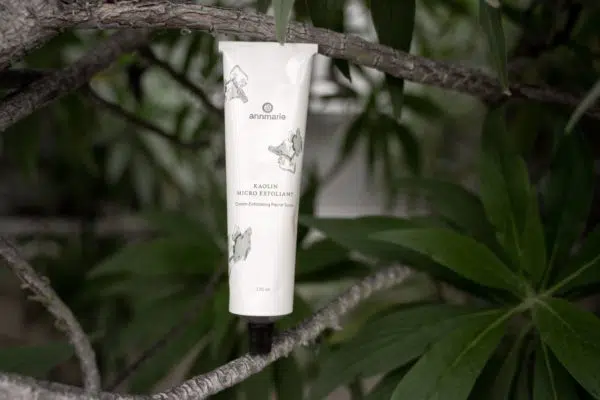
External uses of kaolin
While kaolin may be a popular ingredient right now, its an ancient beauty tradition that’s truly been around for hundreds of years. Since then, it has been used in cleansers, shampoos, toothpastes, and beauty products abound; we use it in our Kaolin Micro Exfoliant. Here are just some of the kaolin clay benefits:
Kaolin clay for the hair
Kaolin clay is an ancient solve-all remedy for scalp problems and healthy hair. Applying a kaolin clay hair mask to the roots of your hair and your scalp will help cleanse, calm, and stimulate the scalp. It also removes dirt and impurities left behind from shampoo and conditioners to help strengthen your hair.
Kaolin clay for the skin
Cleanses
Kaolin gently cleanses and pulls impurities from the pores without causing redness. When transitioning to natural deodorant, creating a clay mask from kaolin clay to apply to the underarms nightly will help remove toxins from the skin and help manage body odor.
Helps with oily skin
Kaolin is absorbent so it soaks up excess oils and can help balance the oil production if it’s used over time.
Exfoliates
Because it doesn’t completely dissolve in water and makes a really nice paste, the crystals in the clay offer great exfoliation.
Stimulates
Kaolin is stimulating to the skin and with long term use, can offer a toned and tightened appearance. Much like bentonite clay masks, you may feel a pulsing of the skin from a kaolin face mask. That signifies circulation and rejuvenation.
Gentle
Kaolin is a really gentle clay that can be used with any skin type, including those people with sensitivities to scrubs and cleansers.
Soothes
Because of its stimulating properties as well as its ability to dry out an area, it has historically been used to soothe and ease bug bites.
DIY face mask
For a soothing and gentle face mask that still stimulates and rejuvinates kaolin clay should be your go-to. It’s one of the few properties on this earth that delivers such versatile effects. Our favorite DIY face mask using kaolin clay is the Manuka Honey Mask. It’s simple, easy and gives you glowing, happy skin.
Whenever you experiment with a new beauty product, be sure to do a trial run on a small patch of skin on the inside of your arm (where it is tender and sensitive enough to tell how your face would react). If you do not see a rash or irritation appear, carry on with your beauty routine. If you do, steer clear of that product.
Ingredients:
- 1 tsp of manuka honey
- 2 tsp Kaolin Micro Exfoliant
- 1 tsp of water, rose water or witch hazel
- 1 drop of tea tree oil
Making and applying the mask
First things first, add the water to the manuka honey. Do not skip ahead and combine everything into the bowl because the honey will not mix well with the clay without a water base. If you prefer you can substitute rose water for the water, which will give your mask a nice floral smell, or witch hazel, which is an astringent and better for those with oily skin. Manuka honey has incredible health benefits, with its antibacterial, antifungal and anti-inflammatory properties.
Next, add in our Kaolin Micro Exfoliant. If you don’t have our Kaolin Micro Exfoliant, simply adding kaolin clay will suffice. Make sure anytime you mix clay into a mask you do so in a bowl that is NOT metallic. It messes with thee minerals in the clay, dampening it’s health benefits and no one wants that.
Finally, add in a drop of tea tree oil for a touch of antibacterial, anti-inflammatory, smell-good pizazz. Tea tree oil also works wonders on acne and the appearance of acne scars.
Apply the mask to your clean face and let it sit for about 20 minutes, then remove with warm water and a towel.
Our favorite versatile clay
The versatility of kaolin clay is a true gift from the earth, providing us with minerals and benefits we cannot produce ourselves. Whether you choose to let the internal benefits shine upon you or embrace the external health and beauty benefits, kaolin clay transcends back, long into our past traditions and is here today for you to rediscover and reunite with.
Enjoy the experimentation of kaolin clay on your skin, hair and within and watch you glow from the inside out.
References:
Aspen. “10 Beauty Benefits of Kaolin Clay for Skin, Hair and More.” Beautymunsta. N.p., 20 Dec. 2016. Web. 10 Apr. 2017.
Charl. “What is Kaolin Clay? Benefits, Powder, Skin, Side Effects, Properties of China /White Clay.” DurableHealth. N.p., 19 May 2016. Web. 10 Apr. 2017.
“KAOLIN: Uses, Side Effects, Interactions and Warnings.” WebMD. WebMD, n.d. Web. 10 Apr. 2017.
“Minerals.net.” Kaolinite: The clay mineral kaolinite information and pictures. N.p., n.d. Web. 10 Apr. 2017.
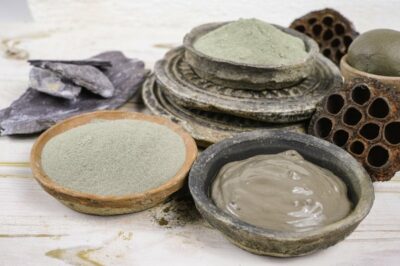

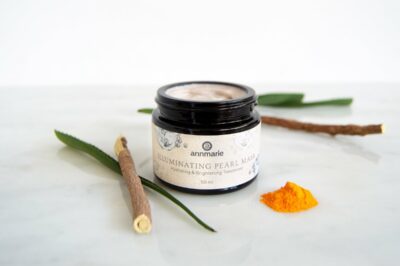
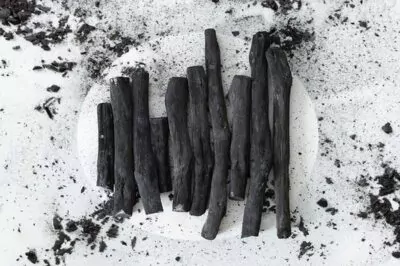

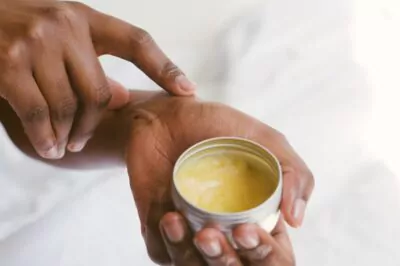


Thank you for such an informative article! Kaolin is also used in organic agriculture in orchard crops like pears and apples and vegetable crops like cucumbers and squash. A fine layer of the clay is sprayed on leaves leaving a white film that acts as a natural, harmless protectant from insect pressure and sun scald in hotter months.
As a child I had the mumps & Kaolin Clay was helpful, it was made into a paste looking like chewing gum, spread on a strip of muslin or cotton sheet, which was folded up then held over steam until warm. This was wrapped around your swollen face and neck with a thick scarf over the top.
What would be the comparison with French green clay?
Both are very mineral rich & achieve similar results. Kaolin clay is not as oil-absorbing as French Green Clay which makes it ideal for drier skin types 🙂 Hope this helps!